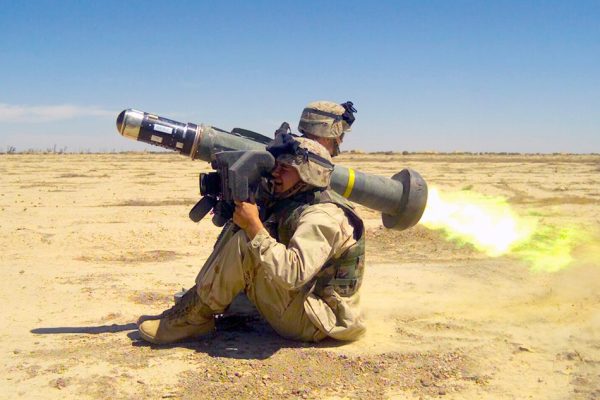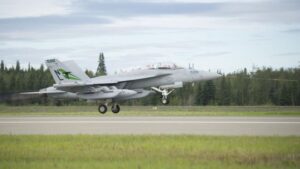Ukraine keeps needing more anti-tank missiles, the Army has massively revved up production, and Russian tanks continue to get decimated … all because of the performance of Javelin Anti-Armor weapons. Demand for the weapons continues to soar as they have proven their value in Ukraine far beyond what may have been initial expectations.
Now, the US Army has placed the largest single-year Javelin order in history, awarding Lockheed and Raytheon a deal to build upon and add to a deal from last year calling for the production of thousands of new Javelin All Up Round ammunition per year into 2026.
Since the beginning of the Russian invasion several years ago, Ukrainians have been using shoulder-fired anti-armor weapons to cripple Russia’s armored assault. The weapons are extremely effective in a kinetic sense and have proven valuable in combat for years, yet they have also been employed by Ukrainians in tactically innovative ways. Ukrainians used hit-and-run-style ambushes, elevated terrain, and urban structures to target and destroy advancing Russian tanks and armored vehicles. Dismounted groups of Javelin-armed Ukrainian fighters would assemble and then disperse quickly to surprise advancing Russian armor when formations were traveling over bridges, through narrowly configured passageways or otherwise vulnerable positions. The result has been crippling for Russia, and a recent Army intelligence report analyzing current wars found that Russia’s entire active duty tank force of more than 3,000 tanks have been destroyed. The Army’s Research Analysis, called “The Operational Environment 2024-2034 Large-Scale Combat Operations.” (US Army Training and Doctrine Command, G2), found that as of July 2024, 3,197 tanks have been destroyed.
Javelin Anti-Armor shoulder-fired weapons have been substantially upgraded in recent years by Raytheon with Container Launch Units, more precise targeting technologies, and new, more advanced lethal explosives. The Army intel analysis, which researched the Russia-Ukraine conflict in great depth, explained that anti-tank guided missiles, combined with drones and fires, have been used “to great effect.” The arrival of large numbers of unmanned systems such as mini-drone sensors have had an huge effect, the Army analysis explained, in large measure because attacking forces are increasingly able to see on the other side of ridges and buildings in real time and use high-speed surveillance and computer processing to identify targets and track enemy movements.
“Ukrainian Armed Forces have used vast quantities of man-portable air-defense systems (MANPADS), antitank guided missiles, and FPV UAS—combined with fires—to great effect. As of July 2024, Russia has lost 3,197 main battle tanks—more than its entire active-duty inventory at the outset of conflict—and 6,160 armored fighting vehicles, forcing them to pull increasingly obsolescent systems from storage,” the text of the report states.
The Javelin has been used effectively in combat for many years, yet its performance in Ukraine has generated new tactical thinking about certain kinds of Combined Arms Maneuver and “moving-to-contact” with an enemy.



